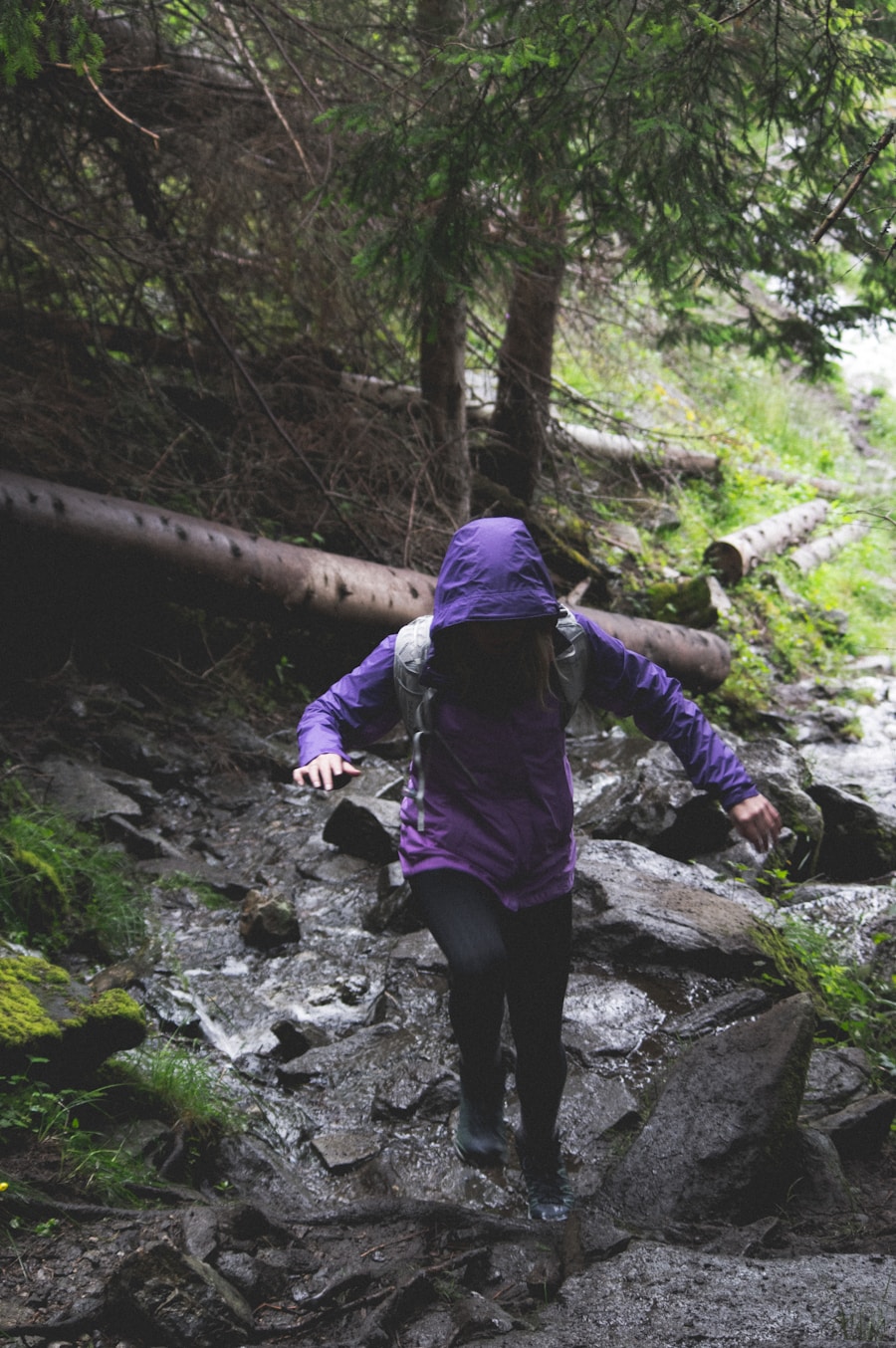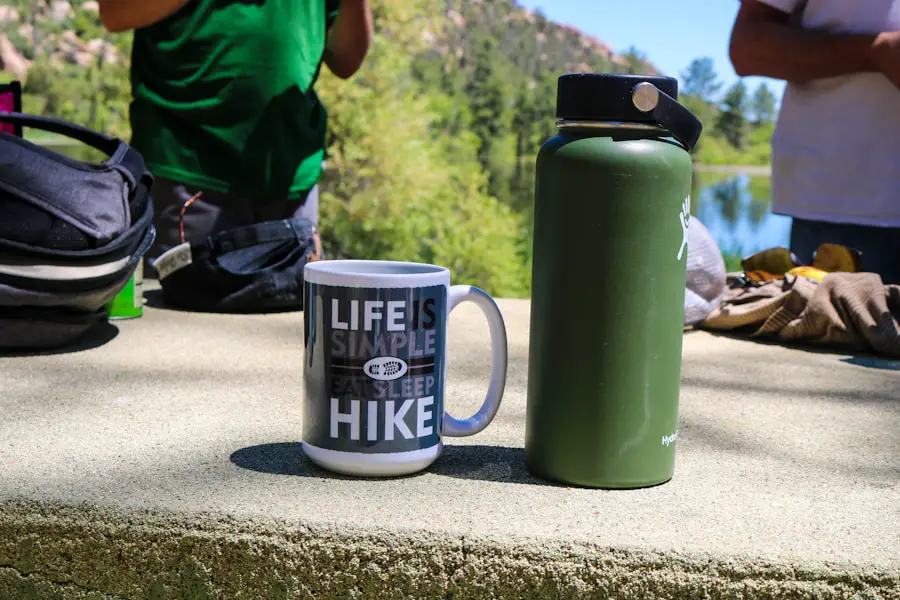Hiking is an exceptional form of exercise that offers numerous benefits for those looking to lose weight. One of the primary advantages of hiking is its ability to burn calories effectively. Depending on factors such as terrain, pace, and individual body weight, a person can burn anywhere from 400 to 700 calories per hour while hiking.
This calorie expenditure is significantly higher than many traditional forms of exercise, such as walking on a flat surface or even jogging. The varied terrain encountered during hikes—such as hills, rocks, and uneven paths—engages multiple muscle groups, leading to a more comprehensive workout that not only aids in weight loss but also enhances overall fitness. Moreover, hiking provides a unique opportunity to connect with nature, which can have profound psychological benefits.
Studies have shown that spending time outdoors can reduce stress levels, improve mood, and enhance mental well-being. This connection to nature can make the experience of exercising more enjoyable and sustainable over time. When individuals find joy in their activities, they are more likely to stick with them long-term, which is crucial for achieving and maintaining weight loss goals.
The combination of physical exertion and mental rejuvenation makes hiking a holistic approach to weight management.
Key Takeaways
- Hiking can aid in weight loss by burning calories, increasing metabolism, and reducing stress.
- Start a hiking routine by choosing beginner-friendly trails, gradually increasing distance and intensity, and staying consistent.
- The right hiking gear includes supportive footwear, moisture-wicking clothing, a backpack with essentials, and navigation tools.
- Incorporate interval training and resistance exercises by adding inclines, speed bursts, and bodyweight exercises to your hikes.
- Nutrition plays a crucial role in hiking for weight loss, so pack healthy snacks, stay hydrated, and fuel your body with balanced meals.
How to Start a Hiking Routine for Weight Loss
Embarking on a hiking routine for weight loss requires careful planning and gradual progression. For beginners, it is essential to start with shorter, less challenging trails to build endurance and confidence. Local parks or nature reserves often have well-marked trails that cater to various skill levels.
Starting with a hike that lasts about 30 minutes to an hour allows newcomers to acclimate to the physical demands of hiking without feeling overwhelmed. As fitness levels improve, hikers can gradually increase the duration and difficulty of their hikes, incorporating steeper inclines or longer distances. In addition to selecting appropriate trails, establishing a consistent schedule is vital for creating a successful hiking routine.
Setting aside specific days and times each week dedicated to hiking can help individuals develop a habit. It may also be beneficial to find a hiking buddy or join a local hiking group. Social support can enhance motivation and accountability, making it easier to stick with the routine.
Furthermore, documenting each hike—whether through a journal or a fitness app—can provide insights into progress and help maintain enthusiasm for the journey ahead.
Choosing the Right Hiking Gear for Weight Loss

Selecting the appropriate gear is crucial for maximizing the benefits of hiking while minimizing discomfort or injury. Footwear is perhaps the most critical component; investing in high-quality hiking boots or shoes that provide adequate support and traction can significantly enhance the hiking experience. Ill-fitting shoes can lead to blisters and foot pain, which may deter individuals from continuing their weight loss journey.
It is advisable to try on several pairs and consider factors such as arch support, cushioning, and breathability before making a purchase. In addition to footwear, clothing plays an essential role in comfort during hikes. Opting for moisture-wicking fabrics can help regulate body temperature and keep hikers dry, especially during strenuous climbs.
Layering is also recommended, as it allows individuals to adjust their clothing according to changing weather conditions. Accessories such as hats, sunglasses, and trekking poles can further enhance the hiking experience by providing protection from the sun and improving stability on uneven terrain. By investing in the right gear, hikers can focus on their weight loss goals without being hindered by discomfort or distractions.
Incorporating Interval Training and Resistance Exercises into Your Hiking Routine
| Benefits of Interval Training and Resistance Exercises for Hiking | Impact |
|---|---|
| Improved cardiovascular endurance | Increased stamina and ability to hike longer distances |
| Enhanced muscle strength and power | Better ability to tackle steep inclines and rugged terrain |
| Increased calorie burn | Helps in weight management and fat loss |
| Improved agility and balance | Reduced risk of injury on uneven trails |
| Boosted overall hiking performance | Ability to enjoy and explore more challenging trails |
To maximize weight loss through hiking, incorporating interval training and resistance exercises can be highly effective. Interval training involves alternating between periods of high-intensity effort and lower-intensity recovery periods. For example, hikers can choose sections of a trail where they increase their pace or tackle steeper inclines for short bursts before returning to a moderate pace.
This method not only boosts calorie burn during the hike but also enhances cardiovascular fitness and endurance over time. In addition to interval training, integrating resistance exercises into hikes can further elevate the workout’s intensity. Simple bodyweight exercises such as squats, lunges, or push-ups can be performed at scenic stops along the trail.
Carrying lightweight resistance bands or using a backpack filled with weights can also add an extra challenge. These exercises engage different muscle groups and promote strength development while simultaneously benefiting cardiovascular health. By diversifying the hiking routine with these techniques, individuals can create a more dynamic workout that accelerates weight loss results.
Understanding the Role of Nutrition in Hiking for Weight Loss
While hiking is an excellent way to burn calories, nutrition plays an equally important role in achieving weight loss goals. Proper fueling before, during, and after hikes can significantly impact performance and recovery. Consuming a balanced meal rich in carbohydrates, proteins, and healthy fats before heading out ensures that the body has adequate energy reserves for the physical demands of hiking.
Foods such as whole grains, lean proteins, fruits, and vegetables provide essential nutrients that support endurance and stamina. During hikes, it is crucial to stay hydrated and replenish energy levels with healthy snacks. Options like trail mix, energy bars, or fresh fruit are convenient choices that provide quick energy without excessive added sugars or unhealthy fats.
Post-hike nutrition is equally important; consuming a meal rich in protein helps repair muscles and aids recovery after strenuous activity. By understanding the relationship between nutrition and exercise, hikers can optimize their weight loss efforts while ensuring their bodies remain nourished and energized throughout their journeys.
Overcoming Challenges and Staying Motivated on Your Hiking Weight Loss Journey

Embarking on a weight loss journey through hiking can present various challenges that may test one’s resolve. Weather conditions can be unpredictable; rain or extreme heat may deter individuals from hitting the trails as planned. To overcome this obstacle, it is essential to have a flexible mindset and be prepared with alternative indoor workouts or shorter hikes on less challenging days.
Additionally, setting realistic expectations regarding weight loss progress is crucial; fluctuations are normal, and focusing on overall health improvements rather than just numbers on a scale can help maintain motivation. Another common challenge is the potential for boredom or monotony in routine hikes. To combat this, hikers can explore new trails or change their hiking routes regularly.
Engaging in themed hikes—such as birdwatching or photography—can also add an element of excitement and purpose to each outing. Joining local hiking clubs or participating in organized events can introduce new social dynamics that keep motivation high. By embracing variety and community support, individuals can navigate challenges more effectively while remaining committed to their weight loss goals.
Safety Tips for Hiking for Weight Loss
Safety should always be a top priority when embarking on hiking adventures aimed at weight loss. Before setting out on any hike, it is essential to research the trail conditions and understand the level of difficulty involved. Beginners should opt for well-marked paths with clear signage to minimize the risk of getting lost or encountering hazardous terrain unexpectedly.
Additionally, informing someone about your hiking plans—such as your intended route and estimated return time—can provide an extra layer of safety in case of emergencies. Equipping oneself with essential safety gear is also vital for a successful hiking experience. A first aid kit should be part of every hiker’s gear; it should include items like band-aids, antiseptic wipes, pain relievers, and any personal medications needed during outdoor activities.
Carrying sufficient water is crucial for hydration; dehydration can lead to fatigue and impair physical performance significantly. Moreover, wearing appropriate clothing based on weather conditions—such as layers for cold weather or breathable fabrics for hot days—can help prevent heat-related illnesses or hypothermia during hikes.
Tracking Your Progress and Setting Realistic Goals for Weight Loss through Hiking
Tracking progress is an essential component of any weight loss journey through hiking. Utilizing fitness apps or wearable devices can help individuals monitor their distance traveled, elevation gained, calories burned, and even heart rate during hikes. This data not only provides insights into physical performance but also serves as motivation by showcasing improvements over time.
Keeping a journal that records personal reflections about each hike—such as feelings of accomplishment or challenges faced—can further enhance self-awareness and commitment to goals. Setting realistic goals is equally important in maintaining motivation throughout the weight loss journey. Instead of focusing solely on a target weight, individuals may consider setting performance-based goals such as completing a certain number of hikes per month or conquering more challenging trails over time.
Celebrating small milestones along the way—like reaching a specific distance or improving endurance—can foster a sense of achievement that encourages continued effort. By combining progress tracking with realistic goal-setting strategies, hikers can create a sustainable path toward successful weight loss through this rewarding outdoor activity.
If you’re looking to shed some pounds while enjoying the great outdoors, hiking is a fantastic way to do so. According to a recent study published in the Journal of Sports Medicine and Physical Fitness, hiking can be an effective way to burn calories and lose weight. Researchers found that participants who hiked regularly saw significant improvements in their overall fitness levels and were able to achieve their weight loss goals. So lace up your hiking boots and hit the trails for a fun and effective way to slim down.
FAQs
What is hiking?
Hiking is a form of outdoor physical activity that involves walking on trails or paths in natural environments such as forests, mountains, and parks.
Can you lose weight by hiking?
Yes, hiking can be an effective way to lose weight. It is a form of cardiovascular exercise that can help burn calories and improve overall fitness.
How does hiking help with weight loss?
Hiking helps with weight loss by increasing the number of calories burned through physical activity. It also helps to build and tone muscles, which can increase metabolism and aid in weight loss.
What are the benefits of hiking for weight loss?
Hiking offers several benefits for weight loss, including improved cardiovascular health, increased calorie burn, and the opportunity to engage in physical activity in a natural and scenic environment.
How often should you hike to lose weight?
The frequency of hiking for weight loss can vary depending on individual fitness levels and weight loss goals. It is generally recommended to engage in at least 150 minutes of moderate-intensity aerobic activity, such as hiking, per week for overall health benefits.
Are there any tips for using hiking as a weight loss strategy?
Some tips for using hiking as a weight loss strategy include gradually increasing the intensity and duration of hikes, incorporating uphill and downhill terrain for added challenge, and maintaining a balanced diet to support weight loss efforts.
